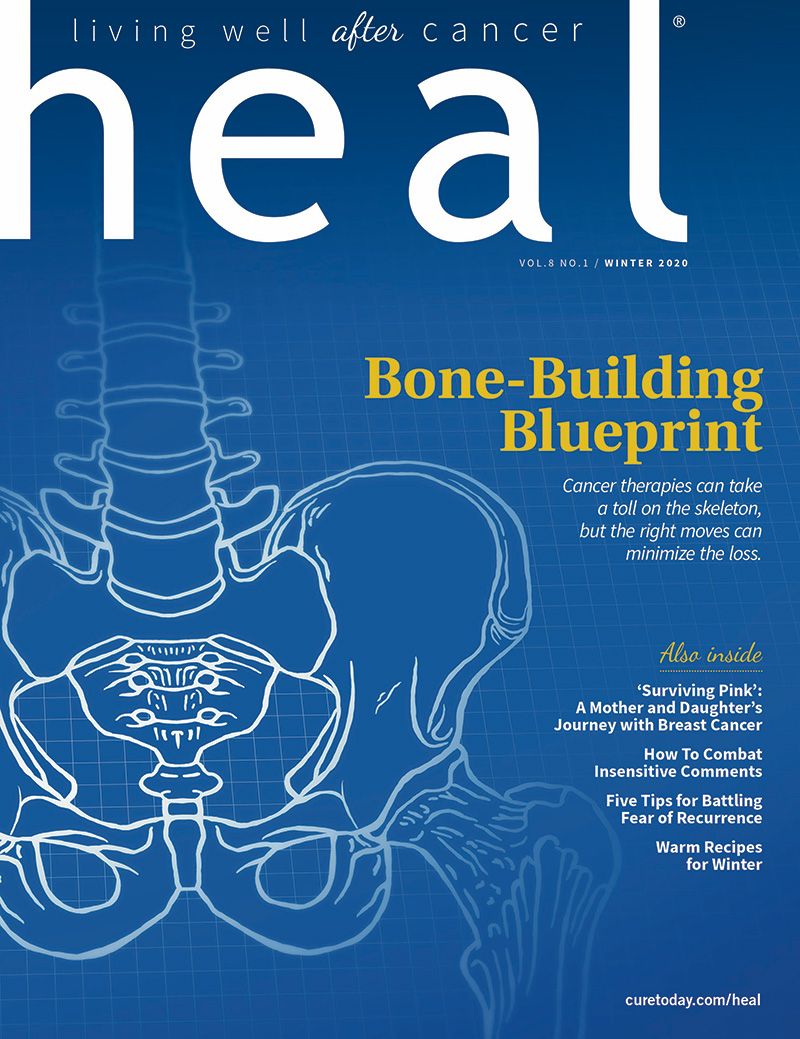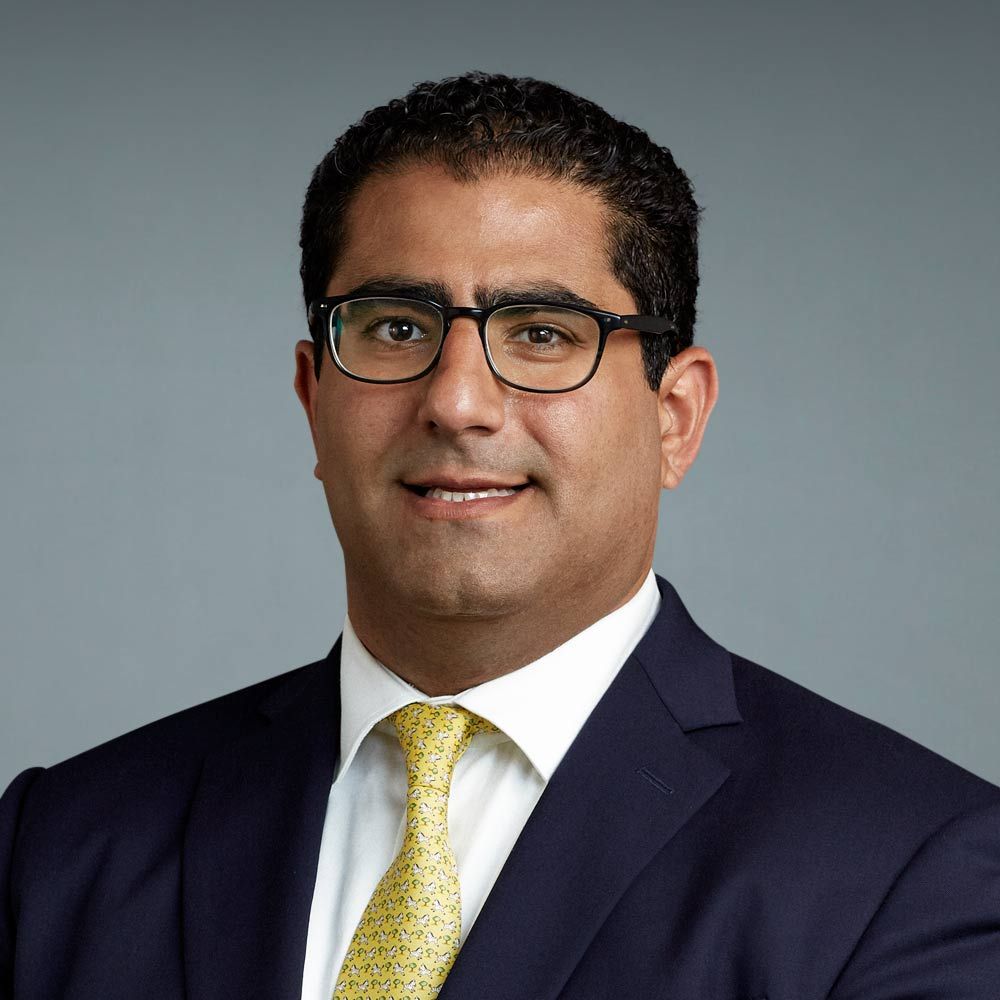Publication
Article
Heal
The Bone-Building Blueprint For Better Health After Treatment for Cancer
Author(s):
Cancer therapies can take a toll on the skeleton, but the right moves can minimize the loss.
When Lance Ferderer, 72, of Silver Spring, Maryland, received his first biopsy confirming that he had prostate cancer in 2016, he was told low-risk cancer could be monitored through active surveillance. But he didn’t remain in that protocol for long.
“I was persuaded by my primary care physician to sign up for a clinical trial at the National Cancer Institute looking at DNA in relation to prostate cancer,” Ferderer recalls. “After those physicians looked at my biopsy results, they had some concerns ... Although I had already had one MRI, the doctors performed a second one with their high-end tools and found that the cancer was more aggressive than my first urologist had thought. Suddenly the equation had changed. Treatment was now called for.”
Ferderer opted for surgery, but his physicians recommended that before the procedure, he follow a six-month regimen of Xtandi (enzalutamide). This hormone therapy prevents testosterone, which fuels the growth of prostate cancer, from reaching cancerous cells.
The treatment was a success. Since his surgery in 2017, Ferderer has been cancer-free. What’s more, so far, there’s no evidence that his bones were affected.
But many men with aggressive prostate cancer receive hormone therapy significantly longer — between 18 and 24 months. These men are at higher risk of one of the more serious side effects of this treatment: low bone mass, or osteopenia, a precursor to osteoporosis. This more serious condition, characterized by a decrease in bone mass and deterioration in bone tissue, weakens bones, making people vulnerable to fractures.
The two largest cancer survivor groups are men with nonmetastatic prostate cancer and women with early-stage breast cancer, whose treatments can cause high rates of bone loss, according to a recent American Society of Clinical Oncology (ASCO) guideline on management of osteoporosis for adult cancer survivors. Hormone therapies for both groups — anti-androgen therapy for men and aromatase inhibitors for post-menopausal women with breast cancer — contribute to bone issues, although the inflammation associated with the cancer itself can also be a factor.
As the number of cancer survivors continues to rise in the United States, increasing from 14.5 million in 2014 to 16 million in 2019, the need to address potential side effects from long-term treatment becomes even more pressing. With the new ASCO recommendations, as well as an ever-growing body of research on the effectiveness of exercise to keep bone loss at bay, practitioners have a number of tools to help prevent osteopenia and osteoporosis and treat patients at risk.
A DELICATE BALANCE
Bone is living tissue and is engaged in an ongoing process of resorption, or the release of minerals into the blood, and the formation of new bone. In healthy bones, these processes are in sync, but when resorption exceeds formation, the imbalance can lead to osteopenia, which can progress to osteoporosis.
Osteoporosis is not a problem only for cancer survivors. The International Osteoporosis Foundation estimates that at least 40% of post-menopausal women and 15%-30% of men will experience fractures. The natural aging process contributes to osteoporosis, as do lifestyle factors such as alcohol and tobacco use. Long-term use of glucocorticoids for a range of medical conditions, such as arthritis and asthma, can also take a toll.
Among cancer survivors, however, the rate of bone loss appears to be faster. The ASCO guideline points out that the rate as part of normal aging is about 0.5% for men, 1% for women in late menopause and 2% for those in early menopause compared with 4.6% for men on anti-androgen therapy and 2.6% for women taking aromatase inhibitors.
“This is part of a pattern of accelerated aging we see among some cancer survivors,” explains Dr. Patricia Ganz, director of cancer prevention and control research at the Jonsson Comprehensive Cancer Center at UCLA.
“In addition to survivors of prostate and breast cancer, leukemia patients taking high-dose steroids and transplant patients on long-term bed rest also face this issue,” Ganz says. “These patients are often young, yet they can lose a lot of bone mass. They may need to receive a baseline bone density test at a younger age than people who have not undergone intensive treatment.”
Ganz recalls a patient in his 30s who falls into that category. “Although he received limited treatment for (Hodgkin lymphoma), his internist had advised him to have a baseline bone density test, which showed that he had osteopenia,” says Ganz. “He’s now being treated with calcium and diet, but importantly, we’re aware that he needs to be monitored. His situation is in contrast to (that of) older patients, who have likely already had a baseline bone density test and may be taking bisphosphates, which support bones.”
In addition to using medications, survivors can protect their bones through diet, aiming to get 1,000 to 1,200 milligrams of bone-building calcium daily through foods such as milk, yogurt and cheese. Obtaining vitamin D, which aids calcium absorption, through foods, supplements or exposure to sunshine is also recommended by the National Institutes of Health.
KEEPING TABS ON BONE HEALTH
Karen Roberts, 63, of Washington, DC, a longtime breast cancer survivor, had a bone density screening when she received a stage 2b diagnosis in 2009. Her bones were strong at that point and continued to show no signs of thinning during the five years she took tamoxifen, the anti-estrogen treatment typically given to premenopausal women. But her profile changed after she went through menopause and was put on the aromatase inhibitor Arimidex (anastrozole).
“My last bone screening, in July 2018, showed that I now have osteopenia,” Roberts says. “Although my next screening isn’t until the summer, the doctors check my calcium levels through blood tests, and they’ve been holding their own. With the help of calcium supplements, vitamin D and a diet in calcium-rich foods, I’ve been able to keep bone loss under control.”
The ASCO guideline advises getting regular bone density screenings and also stresses the importance of taking a family history because bone issues have a genetic component. A risk-assessment tool such as FRAX, developed by the World Health Organization collaborating center in the United Kingdom, can help determine an individual’s risk of fractures. “Being aware of these recommendations is especially important for physicians treating patients with hematological malignancies, which tend to be less well managed,” Ganz notes.
PRESCRIPTION FOR EXERCISE
Exercise is key for overall health and well-being, according to Ganz. Not only will it maintain bone health, but it can also help reduce fatigue, fractures and falls, as well as lift mood, improve balance and boost self-confidence. Weight-bearing exercise such as stair-climbing, walking, and doing squats and lunges is best for building bones, whereas stretching helps increase flexibility in the joints. Nonimpact aerobic activities such as swimming have less effect on bones but are great for stamina.
A growing body of research supports the key role of exercise. For example, Hawley Almstedt, an exercise physiologist and registered dietitian at Loyola Marymount University in Los Angeles, has looked closely at the benefits for women who have survived cancer. In a 2016 study, she developed an aerobics and strength-training program tailored to this group and recruited 26 participants, with a mean age of 63 years. Eighteen women completed the full 26-week plan, and their bone density tests showed a marked improvement in bone mineral density at the spine, hip and throughout the body compared with at the beginning of the study.
But no matter how effective the program, it will only work if followed through. “We’ve found that if we prescribe exercise the way we prescribe medications, people are more apt to do it,” Ganz says. “I tell my patients that I expect them to live a long time, and exercise is a good way to prevent other chronic conditions.”
In the aftermath of treatment, exercise also offers a way to help the body heal. Carol Michaels, a cancer exercise specialist based in West Orange, New Jersey, has worked with women who had reconstruction breast surgery following a mastectomy. “Women may find that their range of motion has become limited, and they’re experiencing shoulder impairments,” she says. “We work on exercises to regain flexibility and range of motion, which in turn improves posture. Simple exercises can make a big difference to a woman’s health and well-being during a difficult time of life.”
Gail Kleinman, 70, a breast cancer survivor from New Jersey, felt drained and depleted following a double mastectomy in 2015. She participated in Michaels’ Recovery Fitness program for cancer survivors. By working out with weights and participating in water aerobics, Kleinman improved her balance and stamina. She also met a compatible group of women. “I’m a firm believer in exercise,” Kleinman says. “There’s nothing that it can’t help, from dealing with depression and anxiety to building the immune system. I don’t see a downside.”
Unfortunately, many cancer survivors may not be aware of the value of exercise or know how to find an appropriate plan. One resource: an online program called Thrivors, available through self-insured employers and pharmaceutical companies, which allows survivors to exercise at home.
“The platform offers participants access to a range of exercises geared to their gender, body type, level of pain and stamina,” explains Thrivors founder Cathy Skinner, a cancer exercise specialist based in Minneapolis. “Not only does the program guide participants through different exercises, it also tracks energy and pain levels, a record that patients can bring with them when they see their physicians. This feature empowers patients and gives them more control over their care.”
The approach is about to be put to the test. A clinical trial is recruiting breast cancer survivors between ages 40 and 70 years who exercise 30 minutes or less a day twice a week to assess the benefits of Thrivors+BH (bone health). This enhanced version includes resistance exercises developed by Kerri Winters-Stone, a professor at the Oregon Health & Science University in Portland, to improve bone health. The platform also provides access to a community of survivors, mindfulness training, nutritional advice and educational information. Embedded software will measure adherence, and surveys will assess engagement.
“Ever since my father developed multiple myeloma, probably due to exposure to Agent Orange during the Vietnam War, I’ve been passionate about working with cancer survivors,” Skinner says. “My goal is to have exercise for cancer survivors be as well-known as rehab is for cardiac patients. It’s just as important and should be just as prevalent and widely used.”






